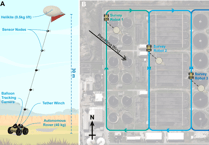STAG beetles are magnificent creatures – once seen, never forgotten!
Britain’s largest land beetle, the males’ impressive antler-like mandibles (jaws) arguably also make them one of the most spectacular.
Males are easy to spot, as they can grow up to 75mm in length, are shiny black with chestnut wing cases and are most often seen flying, looking for mates.
Females are slightly smaller, between 30-50mm in length, and have smaller mandibles. Usually, they’re seen on the ground looking for somewhere to lay their eggs.
They are only seen in southern England, so my first encounter with one of these impressive insects was upon moving south to Surrey: an occasion I’ll never forget. We saw adults and larvae in our garden on the Hermitage estate, St John’s. Alas, I’ve not seen any since moving to Goldsworth Park, nine years ago.
Sadly, like so much of our native wildlife, stag beetles are under threat, and the wildlife charity People’s Trust for Endangered Species (PTES) is asking residents of Surrey, where there are known stag beetle populations, to help by doing a weekly stag beetle count.
To take part, simply record online any stag beetles (male, female, or larvae) that you see at www.stagbeetles.ptes.org.
Stag beetles spend most of their life cycle underground as a larva – three to five years depending on the weather. Periods of very cold weather can extend the process.

Larvae feed on decaying wood under the ground. When fully grown, the larvae build a large cocoon in the soil, where they pupate and finally metamorphose into an adult.
They usually emerge from mid-May onwards. By the end of August, most of the adults will have died.
Adults can’t feed on solid food – they rely on the fat reserves built up whilst developing as a larva. But they can use their feathery tongue to drink from sap runs and fallen soft fruit.
Habitat loss is the biggest issue facing these beetles, either when green spaces and woodlands become developed, or when parks and gardens become too tidy and any dead or decaying wood is removed.
Stag beetles typically emerge from the ground in late May and can often be seen into late July flying around on warm summer evenings in search of mates.
They are usually spotted in gardens, parks and other green spaces such as hedgerows, traditional orchards and allotments. This year, PTES is particularly interested to receive sightings of stag beetles in woodlands, as well as these other habitats.
Laura Bower, conservation officer at PTES, explained: “We know stag beetles live in woodlands in mainland Europe, but we don’t know whether they’re living in UK woodlands. Although these beautiful beetles are doing well in some parts of the country, in other areas they’re extremely rare and even extinct in some places.
“It’s important to find out whether our woodlands are home to stag beetles or not, and we want to encourage anyone living near a woodland to keep their eyes peeled when they're out for a walk, perhaps even just walking the dog, and tell us if they spot one of these iconic insects.”
A great way to help stag beetles is to build a log pile, which provides a vital food source for larvae as well as a place for adult stag beetles to lay their eggs. Simply keep logs, tree stumps, fallen branches or old firewood and bury them upright in soil.
Log piles benefit other wildlife too, from solitary bees to fungi and mosses. Once your log pile is created, you can record its location online at www.stagbeetles.ptes.org, where almost 2,000 are already recorded.
PTES’ Great Stag Hunt has been running since 1998. Last year, over 16,000 sightings (adults or larvae) were recorded across the country. There were 9,153 males, 7,033 females and 699 larvae.
Greater London saw the highest number of sightings with 2,628 records, closely followed by Hampshire (2,601), Surrey (1,578), Berkshire (1,150) and Suffolk (1,122).
The survey enables conservationists to find out where stag beetles are living and where they’re most in need of help.
You don’t need to have taken part before or have previous experience in wildlife surveys to join this year, but PTES does offer a free guide to help you recognise stag beetles and their larvae, with comparisons between these and other insects.
To record a sighting, for top tips on creating the perfect log pile, or to find out more, visit www.stagbeetles.ptes.org.
If you’re on social media, PTES would love to see your stag beetle photos using #GreatStagHunt and tagging @PTES.




